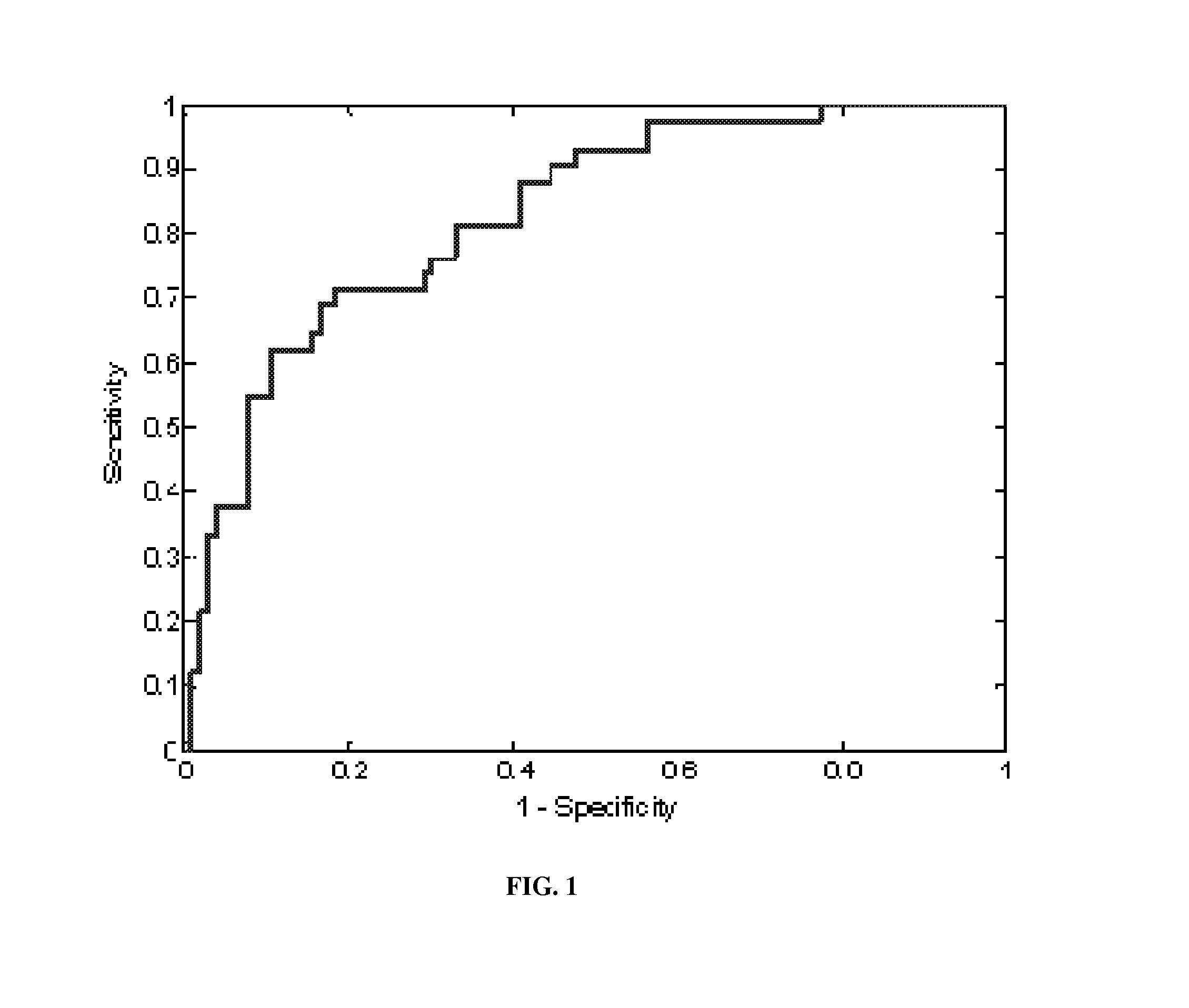Methods for evaluating COPD status
a genomic information and pulmonary disease technology, applied in the field of methods and compositions for assessing pulmonary disease risk using genomic information, can solve problems such as airway damage and inability to perform bronchoscopy, and achieve the effects of rapid diagnosis, rapid treatment of copd, and early and accurate diagnosis
- Summary
- Abstract
- Description
- Claims
- Application Information
AI Technical Summary
Benefits of technology
Problems solved by technology
Method used
Image
Examples
example 1
Gene Expression Analysis of Bronchoscopy Samples
[0093]Applicants collected several hundred clinical samples comprising bronchial epithelial cells obtained during routine bronchoscopy. Subjects were enrolled in the trial due to a suspicion of lung cancer who had been referred to a pulmonologist for bronchoscopy. A majority of the subjects were subsequently confirmed to have lung cancer by histological and pathological examination of cells taken from the lung either during bronchoscopy, or during some follow-up procedure. A minority of subjects were found to be cancer free at the time of presentation to the pulmonologist and up to 12 months following that date. Samples were utilized to develop a gene expression test to predict subjects with the highest risk of cancer in cases where bronchoscopy yields a non-positive result. The combination of false-negative cases (which occurs in 25-30% of the cancer cases) and the true-negative cases yield a combined set of non-positive bronchoscopy ...
example 2
Identification of Differentially Expressed Genes Associated with Chronic Obstructive Pulmonary Disease
[0097]Applicant sought to determine whether genes are differentially expressed between subjects with and without COPD (all of which are cancer-free). Applicants sought to determine if the expression levels of those genes could be combined in order to predict COPD cases, in subjects without lung cancer. COPD is a major risk of lung cancer and identification of subjects with COPD may be an effective means of identifying subjects who will likely develop cancer which ultimately could be used as an effective early detection method. Furthermore, by identifying genes associated with COPD, some of these may be shown to be effective drug-targets for chemoprevention strategies.
[0098]Applicants found that a total of 1833 genes are differentially expressed (p≦0.05) after applying a false-discovery rate correction. Applicants further found that gene expression intensities could be combined using...
PUM
| Property | Measurement | Unit |
|---|---|---|
| nucleic acid detection assay | aaaaa | aaaaa |
| composition | aaaaa | aaaaa |
| forced expiratory volume | aaaaa | aaaaa |
Abstract
Description
Claims
Application Information
 Login to View More
Login to View More - R&D
- Intellectual Property
- Life Sciences
- Materials
- Tech Scout
- Unparalleled Data Quality
- Higher Quality Content
- 60% Fewer Hallucinations
Browse by: Latest US Patents, China's latest patents, Technical Efficacy Thesaurus, Application Domain, Technology Topic, Popular Technical Reports.
© 2025 PatSnap. All rights reserved.Legal|Privacy policy|Modern Slavery Act Transparency Statement|Sitemap|About US| Contact US: help@patsnap.com

